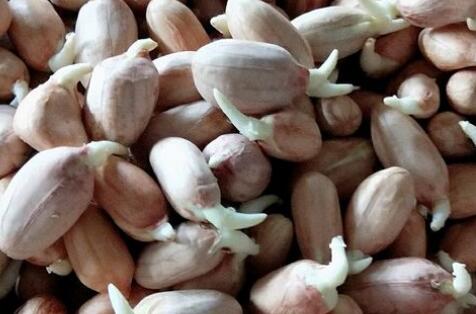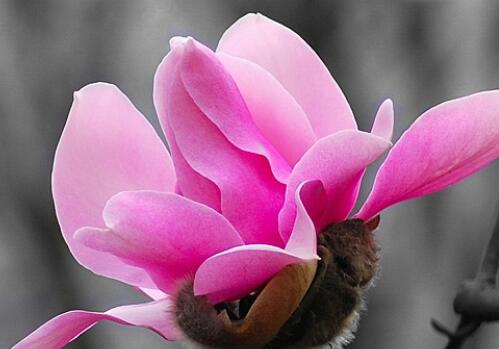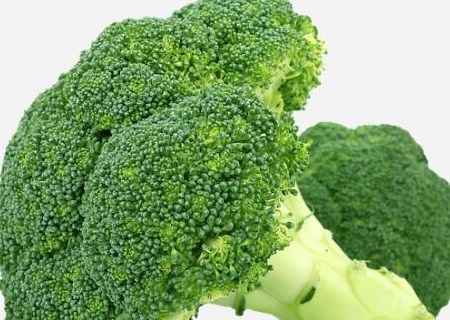When will summer peanuts be sown? What are the high-yield planting techniques?
Summer peanut has become the first choice of many growers because of its high economic benefits, easy cultivation and management, conducive to land recycling and other advantages. When will summer peanuts be sown? What are the high-yield planting techniques?

When will summer peanuts be sown?
Summer peanuts generally sow peanuts after wheat harvest, which can not only solve the problems of poor sowing quality of wheat interplanting peanuts, but also facilitate wheat mechanization harvest and peanut mechanization sowing, facilitate peanut soil preparation, fertilization, sowing, time-saving and labor-saving. The best sowing period of summer peanut will be entered at the beginning of June. The earlier the summer direct seeding peanut sows, the higher the yield. Therefore, the soil should be prepared in time after the last crop harvest, and sowing as early as possible, no later than June 20 at the latest.
Peanut sowing conditions and preparatory work should not be ignored. The following points should be borne in mind:
The main results are as follows: 1. After continuous drying with shell for 2-3 days, the seedlings germinated quickly and seedlings emerged evenly after sowing. Choose a sunny day, spread the shelled peanuts on the sun field at 10:00 in the morning, about 6cm thick, put them away until about 4pm, and dry them for 2 days depending on the seed condition.
2. Peanuts should not be shelled prematurely and should be carried out about a week before sowing.
3. Seed dressing with seed dressing agent before sowing can effectively control peanut stem rot, root rot and other seedling diseases, as well as underground pests, seedling aphids, root rot, stem rot and other seedling diseases.
4. When sowing peanuts, the soil moisture should be sufficient, and when the soil moisture is insufficient, it should be sown to facilitate seedling emergence and seedling growth. The suitable soil moisture is 60%-70% of the maximum water holding capacity of the soil, which is generally controlled by the degree to which the soil is held by hand and loosened. The sowing depth is generally about 5 cm.
5. In addition, reasonable close planting is the key. Summer direct seeding peanut should appropriately increase planting density and rely on population to increase peanut yield. When double-grain sowing, the planting density is 12000 holes / mu ~ 13000 holes / mu.
High-yielding planting techniques of summer peanut
1. Land selection is the foundation, and fattening is the key
Because the growth period of summer direct seeding peanut is short and the time of fertilizer absorption is concentrated, it is necessary to select loam, sandy loam or river silt land with fertile soil, loose soil layer and better drainage and irrigation conditions, and according to the law of peanut fertilizer absorption, combined with stubble ridging, fertilizer should be applied to the ground at one time.
Years of practice has proved that the amount of fertilizer applied to peanuts with a yield of 300 kilograms per mu is as follows: 1000 kilograms of high quality ring fertilizer, 20 kilograms of ammonium bicarbonate, 45 kilograms of superphosphate, 10 kilograms of potassium chloride and 1 kilogram of borax. Conditional re-application of some zinc fertilizer, calcium fertilizer and so on, in order to fully meet the nutrient needs of summer peanut in the process of development.
2. Select improved varieties of high yield and high quality peanuts and plant them densely.
The summer direct seeding peanut was sown in the first ten days of June and harvested in the middle of October. The accumulated temperature above 0 ℃ can basically reach 3100 to 3200 ℃. Not only early and middle maturity but also late maturity varieties may be planted. At present, the main varieties selected are: Luhua 1, Luhua 11, Luhua 12, 8130 and so on. Summer direct seeding peanut has few branches and rapid growth, so it is necessary to increase the density appropriately. For large fruit varieties such as Luzi 101,8130, the sowing density is about 9000 piers per mu, medium-grain varieties such as Luhua 11 reach 10000mu to 11,000 piers per mu, and small and medium-sized varieties such as Luhua 12 can sow about 2000 piers per mu.
3. Cover with plastic film and sow seeds with enough moisture.
Plastic film mulching cultivation of summer peanut is a very important measure to increase yield. It not only has the effect of increasing temperature and preserving soil moisture, but also can increase the rate of double-kernel fruit and full fruit. Generally, it can increase yield by 10% to 20%. According to the experiment, sowing from June 20 to July 30, the average number of flowers per plant covered with plastic film was 50.1, which was 12.6 more than that without plastic film mulching, and the flowering time was 3-5 days earlier, and the final flowering stage was 9 days earlier. During the whole growth period, the accumulated temperature of 5 cm in soil was 3098.5 ℃, which was 173.8 ℃ higher than that of 294.7 ℃ without plastic film mulching. Compared with the single plant without film mulching, the number of single plant increased by 11.6 and 1.2, and the double-kernel fruit rate increased by 15.3%, the full fruit rate increased by 12%, and the rice yield increased by 2.4%.
In the sowing time of summer peanut, it is better to sow early than late. In the way, three forms are adopted: first sowing with plastic film, first sowing and then sowing, and first sowing and then grasping plastic film mulching. Sowing first and then covering the film is suitable for potato-summer peanut or garlic-summer peanut sowing area, so the temperature is not very high, and there is no stubble to break the plastic film. After sowing, "the Beginning of Summer" should adopt the method of first covering the film and then creating the first sowing, waiting for the emergence of the seedling and then covering the film, and introducing the seedling out of the film at the same time. The advantages are:
① relieves the pressure of busy farming in three summers
② is beneficial to drought resistant watering of peanut and ensures the whole seedling in one sowing.
③ emerged about 2 days earlier than the other two methods.
The yield of ④ was 6.04% higher than that of sowing before mulching under the same conditions.
However, this method must be carried out after the peanuts are full of seedlings, lest the flood season will cause stagnant water in the ground and cannot be covered with plastic film.
4. pay close attention to the protection after central control to ensure a bumper harvest in an all-round way.
Because summer peanut is produced and developed under the condition of high fertility, high temperature and humidity, its growth is easy to cause population depression and overgrowth lodging, thus affecting the yield and quality of peanut. Therefore, in the stage of vegetative growth and reproductive growth of summer peanut (late July), if the height of the main stem reaches more than 40 cm, spray inhibition should be carried out immediately.
The method is to use 50 grams of high-efficiency and strong retarder per mu, 50 kg of water, and spray the plant growth point evenly on a sunny day to control the up and down.
Peanut leaf spot is one of the main diseases in the later stage of peanut. Alternately use 50% mancozeb 300 × 500 times solution and 1pur2Ru 200 times Bordeaux solution to control peanut leaf spot disease and treat peanut leaf spot disease, spray once every 10 to 15 days, and spray 2 Mel 3 times continuously.
The high-yield package of half a jin peanut can also be used during the peanut growing period. the first use at the seedling stage can take root and promote growth, prevent dead seedlings from rotting roots, and prevent diseases such as peanut root rot and white silk disease. Using it for the second time when the plant height is 35-40 cm can effectively control the vigorous growth, promote needling, promote fruit setting, control peanut stem rot, leaf spot, white silk disease and other diseases, and the three-pass medicine of half a jin peanut is composed of calcium cyclate and uniconazole, which can effectively prevent premature senility and does not affect the next crop; while the peanut prosperity control products on the market are generally paclobutrazol. Spraying the high-yield package of half a jin peanut for the third time before receiving the goods can promote fruit expansion, prevent peanut premature senescence, control peanut leaf spot, rust and other diseases.
The main pests affecting the yield of summer peanut are aphids, grubs, cotton bollworm and so on. When sowing, 10% pungent mixed phosphorus cover seed can prevent the harm of aphids and grubs to peanuts. If aphids, cotton bollworm and other insect pests occur in the middle and later stages, 40% omethoate or 50% monocrotophos 1500-2000 times can be used to control peanuts to ensure a bumper harvest.
Fertilization Technology of Summer Peanut
It is understood that the amount of nitrogen, phosphorus and potassium required for each 100kg pod production of peanut is 5.5kg, 1.1kg and 3.5kg, respectively, and the ratio of nitrogen, phosphorus and potassium is 5 ∶ 1 ∶ 3. According to the target yield of peanut production, through soil testing, we know the amount of nitrogen, phosphorus and potassium supplied by the soil, and then determine the amount of fertilizer to supplement nitrogen, phosphorus and potassium. At the same time, according to the climatic conditions, soil fertility and peanut varieties, the amount of fertilizer should be adjusted reasonably to ensure the accurate supply of nutrients and reduce the waste of excessive fertilization and the impact on the environment. In view of the climatic conditions, soil conditions and variety layout of summer flower production areas this year, the editor suggests:
First, in the plots where the amount of fertilizer applied in the wheat season is too large, the yield of wheat affected by climate is not high, and there are more fertilizer residues, peanuts should lose weight properly, and the amount of nitrogen and phosphorus can be reduced by 10% to 15% compared with last year or conventional fertilization, making full use of the aftereffect of wheat fertilizer.
Second, the plot of continuous cropping peanut for many years has poor nutrient balance and serious soil-borne diseases. It is suggested that organic or biological soil conditioners should be applied, soil improvement should be carried out, and attention should be paid to the application of calcium, sulfur and trace elements to achieve a balanced supply of nutrients.
Third, farmers and plots newly planted peanuts should do soil testing and fertilization.
Remind farmers that for peanut continuous cropping plots, they should pay attention to scientific seed dressing of peanuts, control underground pests and soil-borne diseases, and ensure a whole seedling sowing; for newly planted peanut plots, underground pests are relatively light, and nodule bacteria can be mixed to reduce the application of nitrogen fertilizer. give full play to the role of nodule nitrogen fixation. Suitable microbial fertilizer can also be selected for peanut application to promote soil activation and nutrient release.
Time: 2019-03-17 Click:
- Prev

When does deciduous Arbor Xinyi Flower (Magnolia) usually be planted and harvested? When will it blossom? How long is the florescence? Cultivation technique
Xinyi flower (Magnolia) has high ornamental value and is an ideal flower pattern for beautifying the courtyard. Alias Magnolia, Wangchun, Magnolia. When does Magnolia usually be planted and harvested? When will it blossom? How long is the florescence? What are the cultivation techniques? According to the information of Magnoliaceae, Xinyi flower is also called Wang Chunhua.
- Next

What are the seed planting methods of broccoli (also called broccoli)? What are the planting prospects? How much money can you earn per mu?
Broccoli, broccoli, commonly known as broccoli. It's a common vegetable. Commonly known as cauliflower, biennial herbs. It originated in Italy and has a wide range of branches in China. So do you know the seed planting methods of broccoli? What are the planting prospects? How much money can you earn per mu?
Related
- Fuxing push coffee new agricultural production and marketing class: lack of small-scale processing plants
- Jujube rice field leisure farm deep ploughing Yilan for five years to create a space for organic food and play
- Nongyu Farm-A trial of organic papaya for brave women with advanced technology
- Four points for attention in the prevention and control of diseases and insect pests of edible fungi
- How to add nutrient solution to Edible Fungi
- Is there any good way to control edible fungus mites?
- Open Inoculation Technology of Edible Fungi
- Is there any clever way to use fertilizer for edible fungus in winter?
- What agents are used to kill the pathogens of edible fungi in the mushroom shed?
- Rapid drying of Edible Fungi

